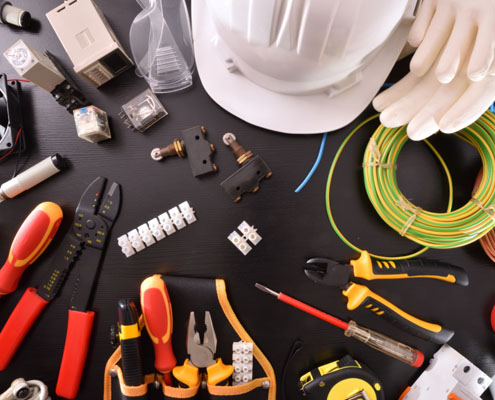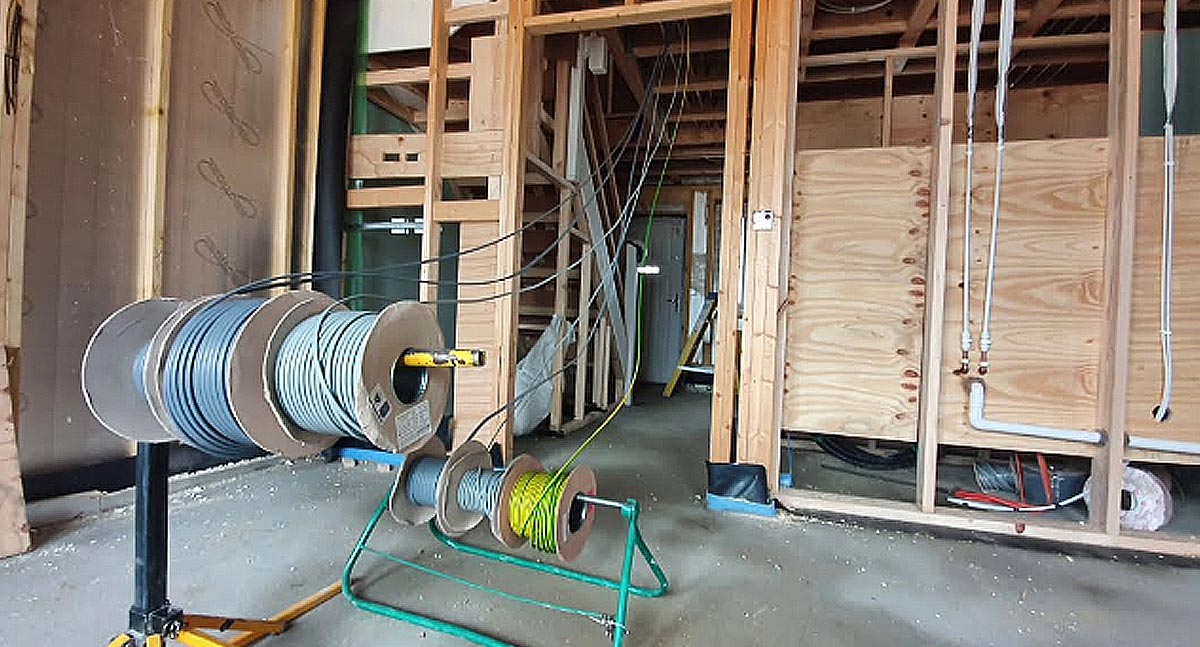Advanced BRE Automation Australia: Changing Your Automation Requirements
Advanced BRE Automation Australia: Changing Your Automation Requirements
Blog Article
The Ultimate Guide to Electrical Installation: Tips and Methods for a Safe and Effective Home Circuitry System
In the realm of home upkeep, few aspects are as important yet often overlooked as the electrical circuitry system. Guaranteeing a risk-free and reliable home wiring arrangement requires not just a fundamental understanding of electric principles however likewise practical knowledge of setup methods and maintenance protocols. From navigating the ins and outs of cable connections to troubleshooting common problems that may develop, this guide intends to furnish house owners with the necessary suggestions and tools necessary for a secure and energy-efficient electrical system. By checking out the subtleties of electric security steps and energy-saving methods, this extensive guide will clarify the intricacies of home circuitry, equipping individuals to organize their house's electrical framework.
Comprehending Electrical Precaution
To make certain the security of both individuals and home, understanding and carrying out appropriate electric safety and security procedures is paramount in any type of home circuitry project. Electrical power is a powerful pressure that can be hazardous if not handled with caution. One of the essential precaution is making certain that all electrical work is done by certified professionals that comply with neighborhood building regulations and guidelines. It is important to conduct a detailed evaluation of the electric system before starting any type of electrical wiring job to recognize prospective threats or concerns that need to be attended to.
In addition, using the proper tools and equipment is essential for preserving safety throughout electrical installments. Insulated handwear covers, voltage testers, and protective eyeglasses are some of the standard safety equipment that must be worn to stop electrical shocks or accidents. It is likewise crucial to de-energize circuits before dealing with them and to classify all circuits and breakers clearly to prevent confusion.

Essential Tools for Home Electrical Wiring
Making certain the proper implementation of electric precaution in home circuitry jobs includes utilizing a certain set of necessary tools developed to help with the installment process efficiently and securely. A few of the trick tools needed for home electrical wiring jobs include a voltage tester for inspecting live cables, wire strippers for removing insulation from wires, a cord cutter for precisely cutting wires to length, a screwdriver established for safeguarding electrical components, electric tape for insulation and securing connections, a cable ripper for removing cord sheathing, and a multimeter for gauging voltage, existing, and resistance. Furthermore, a drill with bits is essential for producing holes for electrical wiring and installing electric boxes, while fish tapes or poles help in pulling wires through conduits or walls. It is critical to purchase premium devices to make sure precision, effectiveness, and safety and security throughout home wiring projects. By having the essential devices easily available, homeowners can effectively browse the installment process and maintain a safe and secure electrical system within their homes - BRE Electrical Solutions.
Step-by-Step Electrical Setup Overview
Beginning an electric installation project calls for thorough preparation and adherence to safety guidelines. Before beginning any job, ensure you have a comprehensive strategy describing the design of the electric system, including the positioning of electrical outlets, switches, and components. Think about the power requirements of each gadget to establish the appropriate cord gauge and breaker sizes.
The primary step in the installation process is to close off the power supply to the area where you will be functioning. Use a voltage tester to confirm that the circuits are de-energized prior to touching any kind of cords. Next, carefully eliminate existing components or electrical outlets and detach the cords.
When setting up new circuitry, run cords via wall surfaces and ceilings, protecting them in position with suitable fittings. Adhere to best site neighborhood building regulations and maker directions for correct cord installment and connections. BRE Electrical Solutions. Make certain to identify cords for simple recognition and future maintenance

Troubleshooting Common Electrical Wiring Issues
Having actually finished the installment process as detailed in the previous subtopic, fixing common electrical wiring concerns is a crucial skill for guaranteeing the safety and capability of your electrical system. One common problem is a stumbled breaker, frequently caused by overloaded circuits or a short circuit. To troubleshoot this, situate the breaker panel, recognize the tripped breaker by trying to find the one not totally in the "on" setting, and reset it by flipping it fully to "off" and after that back to "on." One more prevalent issue is a malfunctioning outlet, defined by no power or periodic power supply. Ensure the electrical outlet is not managed by a switch, then make use of a voltage tester to look for power. If there is no power, switch off the circuit, evaluate the wiring connections for any kind of loose or broken wires, and replace the outlet if necessary. Constantly flickering lights can show loose wiring links or an overloaded circuit. To resolve this, check and tighten up all cable connections in the affected components and switches and redistribute the load on the circuit to stabilize the electrical need. Frequently checking and without delay addressing these typical circuitry concerns will preserve the safety and security and efficiency of your home electric system.
Tips for Energy-Efficient Electrical Equipments
For optimal energy effectiveness in electrical systems, applying clever practices and making use of energy-saving technologies is critical. One essential idea for achieving an energy-efficient electrical click here for info system is to upgrade to LED illumination. Correct insulation and securing of home windows, doors, and electric outlets can additionally prevent energy loss, inevitably decreasing the work on electric systems.
Verdict
In final thought, executing correct security steps, utilizing essential devices, adhering to a detailed installment guide, repairing usual problems, and incorporating energy-efficient pointers are crucial for a risk-free and efficient home electrical wiring system. By adhering to these practices, home owners can ensure the long life and performance of their electrical installments. It is necessary to prioritize security and index efficiency when it concerns electrical work in order to avoid potential risks and to preserve a trusted electrical system in the home.
Report this page